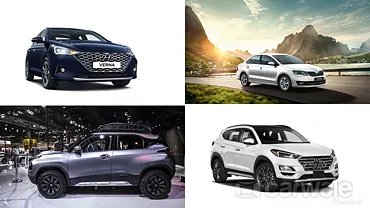In the highly competitive automotive industry, design plays a crucial role in attracting customers and shaping brand identity. Hyundai, known for its innovative approach and evolving design language, stands among global giants like Toyota, Honda, and Volkswagen. This article delves into how Hyundai’s design philosophy compares with its competitors, examining key aspects such as aesthetics, innovation, and market appeal.
Evolution of Hyundai’s Design Language
Hyundai’s journey from a budget-conscious brand to a design powerhouse has been remarkable. Over the past two decades, Hyundai has transformed its image from being perceived as utilitarian to becoming a leader in design innovation. This evolution can be seen in several key models:
- Hyundai Sonata: The Sonata’s design evolution showcases Hyundai’s shift towards more daring and distinctive aesthetics, moving away from conservative designs to embrace fluidic sculpture and more recently, sensuous sportiness.
- Hyundai Tucson: The Tucson has consistently pushed boundaries in compact SUV design, incorporating Hyundai’s fluidic sculpture 2.0 and now evolving into the parametric dynamics design language.
Comparative Aesthetics
Aesthetics are subjective but crucial in automotive design. Hyundai’s approach combines elements of fluidic sculpture and sensuous sportiness, aiming to evoke emotion and appeal across global markets. Comparatively, competitors like Toyota and Honda have traditionally favored more conservative designs with broad market appeal:
- Toyota: Known for reliability and practicality, Toyota’s designs often focus on understated elegance and timeless appeal, seen in models like the Camry and Corolla.
- Honda: Honda’s design philosophy emphasizes a balance between sportiness and functionality, with models like the Civic and Accord blending aerodynamic shapes with sharp lines.
- Volkswagen: Volkswagen’s design ethos revolves around clean lines and German engineering precision, evident in iconic models such as the Golf and Passat.
Innovative Design Features
Innovation drives differentiation in the automotive market. Hyundai has introduced several innovative design features that set it apart from competitors:
- Parametric Dynamics: Hyundai’s latest design language, as seen in the new Tucson, emphasizes bold geometric shapes and kinetic design elements, creating a dynamic and futuristic appeal.
- Solar Roof: Hyundai integrates solar panels into the roof of certain models, enhancing energy efficiency and sustainability without compromising design aesthetics.
Also Read : The Future of Hyundai Car Design: What to Expect
Market Appeal and Consumer Perception
Consumer perception of design heavily influences purchasing decisions. Hyundai’s focus on expressive and sophisticated design has resonated well globally, appealing to younger demographics seeking style and technology. Comparatively, Toyota and Honda’s more conservative designs attract a broader demographic, including older and more brand-loyal customers.
Case Studies: Hyundai vs. Competitors
Let’s explore specific models and their design impacts:
Case Study 1: Hyundai Sonata vs. Toyota Camry
The Sonata and Camry represent midsize sedan stalwarts, each embodying their brand’s design philosophy:
- Hyundai Sonata: Known for its striking design language, the Sonata attracts buyers looking for bold aesthetics and modern features.
- Toyota Camry: Renowned for reliability and resale value, the Camry’s design leans towards timeless elegance, appealing to a broader demographic.
Case Study 2: Hyundai Tucson vs. Honda CR-V
Compact SUVs like the Tucson and CR-V illustrate contrasting design approaches:
- Hyundai Tucson: The Tucson’s parametric dynamics design sets it apart with a futuristic and dynamic appearance, appealing to younger, design-conscious buyers.
- Honda CR-V: Honda’s CR-V combines practicality with a sporty design language, catering to a wide range of buyers seeking reliability and versatility.
Conclusion
In conclusion, Hyundai’s design evolution has positioned it as a formidable competitor in the global automotive market. By embracing innovation and pushing aesthetic boundaries with designs like parametric dynamics, Hyundai continues to appeal to a diverse range of consumers. While competitors like Toyota, Honda, and Volkswagen maintain their strengths in reliability and broad market appeal, Hyundai’s focus on expressive design sets it apart as a leader in automotive design innovation.
Through this comparative analysis, it becomes evident that Hyundai’s commitment to evolving design plays a pivotal role in shaping its brand identity and market positioning in the competitive automotive landscape.
This article structure provides a comprehensive comparison of Hyundai’s car design with key competitors, incorporating informative insights and examples to engage and inform readers interested in automotive design trends and innovations.
(source)
Originally posted 2024-07-18 07:29:29.
